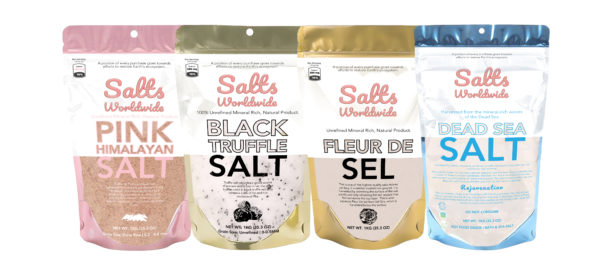
Salt Hits the Health Mark in a New Color
Himalayan pink salt (also known as pink salt) is a chemical compound that consists of crystals of sulfuric acid. This substance was naturally produced in the earth’s crust millions of years ago, with the most abundant deposits found in Himalayan regions. Today, this mineral is widely used for a wide range of applications because it’s deceptively versatile, durable and safe. Here are some examples of how Himalayan pink salt can benefit you.
Himalayan salt can be used as a cooking and baking enhancer. Because it contains high levels of trace minerals like potassium, magnesium, calcium, bromide and sodium, it produces a pink color when it’s heated. It even creates a pleasant aroma when it’s ground and added to foods or cocktails. In addition, the mineral contains a number of vitamins and other nutrients that improve the human body’s absorption of other nutrients, such as calcium, iron and potassium.
A small clinical study conducted in Japan revealed that it increased the absorption of calcium, magnesium and potassium in laboratory mice. Other studies have shown that salts containing iron and other trace minerals like potassium increase the absorption rates of those nutrients. One study showed that menopausal women who took 15 mg of the pink salt twice a day for two months experienced an elevated level of estrogen. Another study published in Clinical Biochemistry found that women who regularly took calcium salts absorbed calcium more easily than women who didn’t.
Salt is often recommended for reducing sodium intake, but there’s not much evidence that it’s effective. A 2021 study in the Annals of Internal Medicine reported that there’s no difference in sodium intake between people who eat a lot of salt and those who don’t. And according to the American Heart Association, there’s even less evidence that high-salt diet causes hypertension. A study published in the Journal of American Science reported that high sodium intake may contribute to high blood pressure. But that’s pretty weak evidence, compared with the evidence that pink Himalayan salt reduces sodium consumption and increases potassium levels.
There’s also a concern that the excessive amount of potassium could cause potassium levels to drop dangerously low–which could cause hypokalemia, a condition that can be life-threatening. Yet another concern is that the excessive intake of calcium could increase the risk of osteoporosis and other bone diseases. There’s not much evidence to support either of those claims.
The controversy continues, but as more information becomes available about the health benefits of the Himalayan pink salt and it is used in place of table salt. People may choose to simply eliminate table salt from their diets all together. Or they may decide to try blending the salt in with their favorite dishes instead of using it straight.
Whatever the case, many health-conscious people are trying to limit their sodium intake. Some companies have started to add sodium to many of their products, but the main ingredient has always been sodium chloride. Hopefully, in the years to come, there will be more alternatives to sodium chloride and the FDA will take further action to regulate the amount of sodium that is in products, including table salt.
One thing is for sure: The salt offers a wide variety of different types of health benefits. Because the pink Himalayan salt contains trace amounts of magnesium, potassium and calcium, it offers more dietary magnesium than do normal table salts. It also provides a unique natural flavor. No two milled salt shakers are alike, so this natural and delicious salt offers a taste that no other salt on the market can offer. While Himalayan Pink Himalayan Crystal Salt may not become the cure all everyone has been looking for, it does add an interesting new flavor to food.



